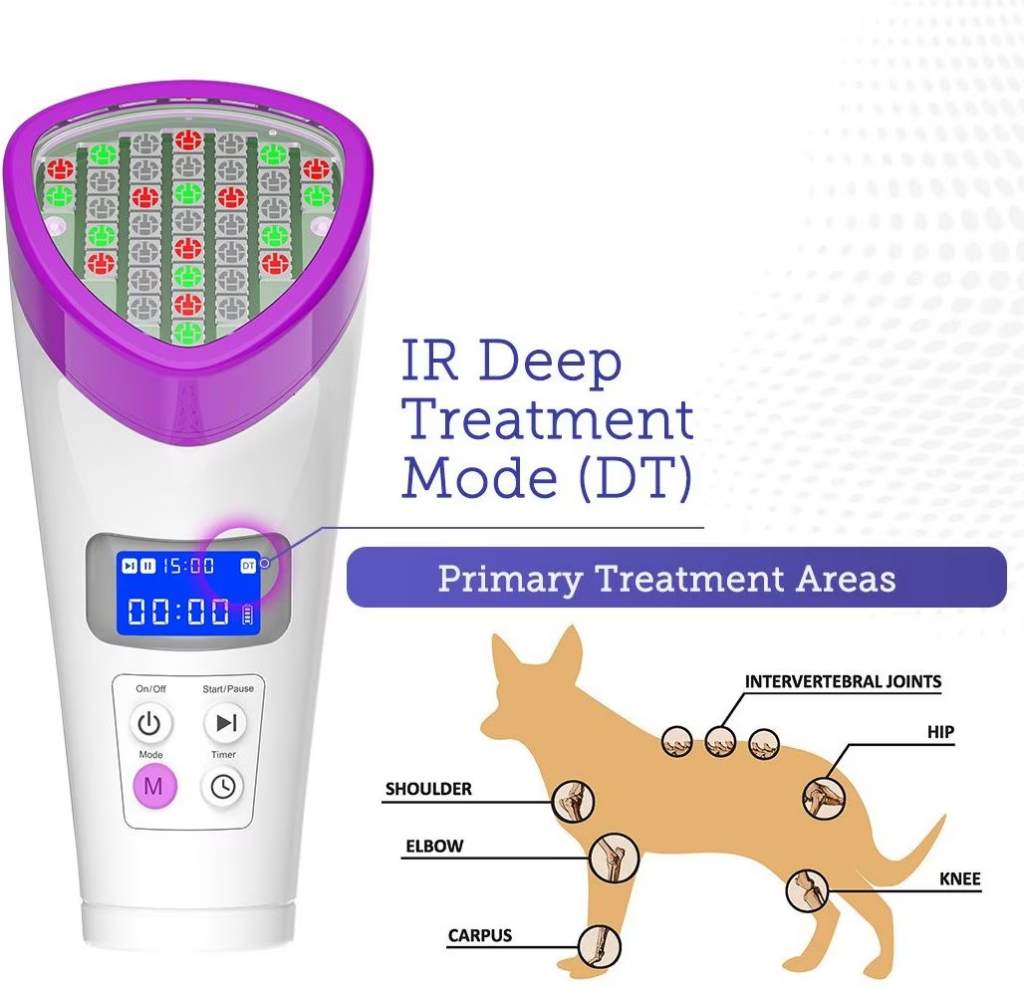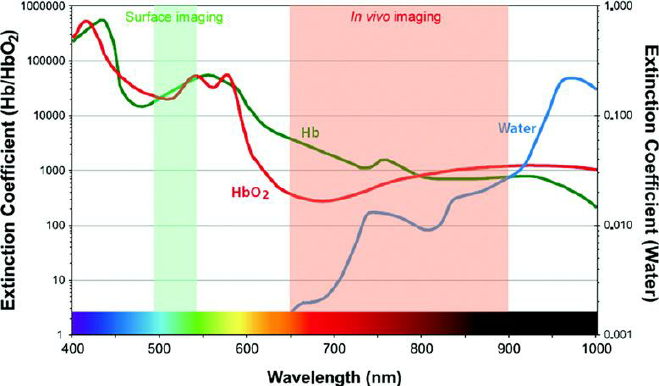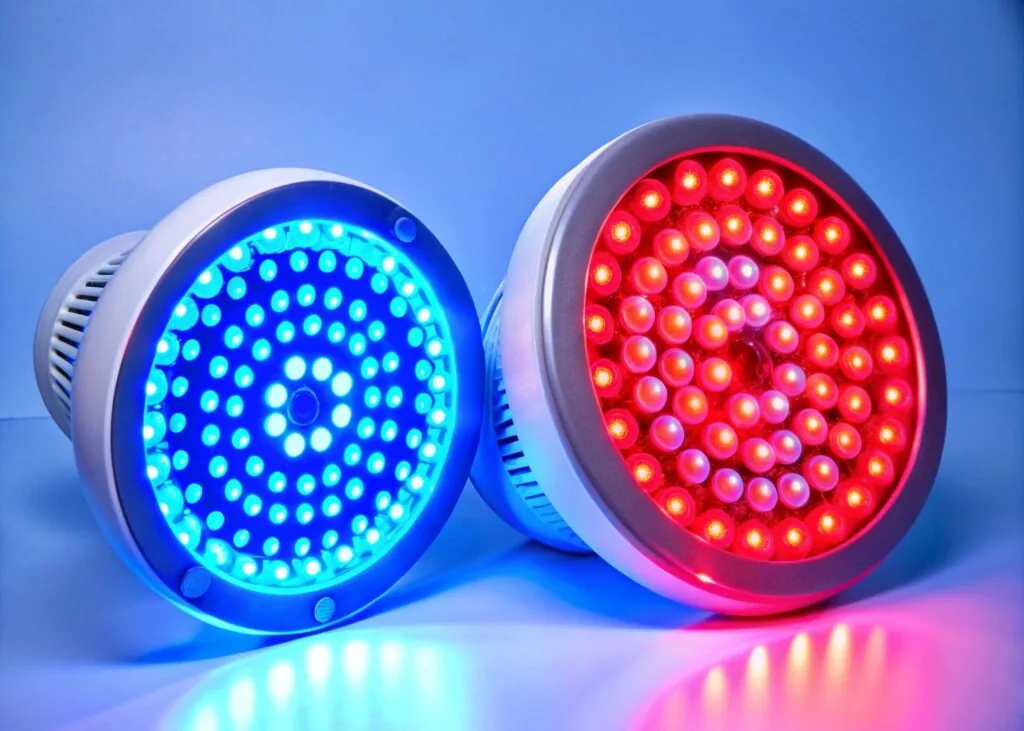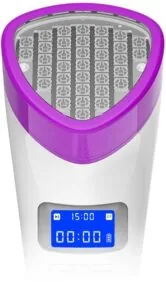LumaSoothe 2: A Comprehensive Overview

Note:This article is part of our Red Light Round Up Series where we review and compare the top devices on the market.
The LumaSoothe 2 is marketed as a light therapy device designed for at-home treatment of pets, specifically for managing pain, inflammation, and skin conditions. With its use of multiple wavelengths of light, including red and infrared, the LumaSoothe 2 claims to deliver therapeutic benefits by penetrating the skin and stimulating healing at the cellular level. But how well does it actually perform?
Let’s dive into the details, considering the device’s strengths and shortcomings based on both manufacturer claims and independent testing.
First Impressions: Promising Technology, But Questionable Power
Light therapy is increasingly popular for treating various conditions in pets, from arthritis to wound healing. The science behind it, particularly red and infrared light therapy, is well-supported by clinical studies.
The LumaSoothe 2 boasts two key therapeutic wavelengths: red light at 635nm and infrared light at 940nm. Red light is known for reducing inflammation and promoting cell regeneration, which is great for wound healing, while infrared light can penetrate further into tissues, making it a good candidate for pain relief and injury recovery
However, not all wavelengths are equally effective at reaching deep tissues. The graph below helps to explain why. On a logarithmic scale—where each step represents a 10-fold increase—we can see how different wavelengths interact with biological tissues. Hemoglobin tends to absorb wavelengths below 800nm (the red spectrum in the graph), which can limit how deeply those wavelengths penetrate into tissues. Meanwhile, water absorbs most of the energy from wavelengths above 850nm, including the 940nm wavelength used in LumaSoothe 2. This means that while 940nm can be effective for certain applications, a significant portion of its energy is absorbed by water, reducing the amount that reaches the target tissue.
For deeper tissue penetration, a wavelength closer to 808nm is ideal, as it balances absorption by hemoglobin and water, allowing more light to reach the intended area for effective pain relief and healing.

Beyond wavelengths, our independent testing casts doubt on the LumaSoothe 2’s real-world performance, particularly its power output. When tested, we found that the actual power output was just a fraction of this claim—0.225 J/cm² per minute instead of the advertised 6.4 J/cm². This discrepancy is significant, with our tests showing the device’s power to be 28 times lower than what is advertised. This could mean that while the LumaSoothe 2 might still offer some therapeutic effects, the intensity may not be enough for it to perform as effectively as promised, especially when compared to stronger devices like the Luma, which delivers much more light power to the target tissue.
Wavelengths and Light Specs: Overcomplicated for No Reason?
One of the LumaSoothe 2’s selling points is its use of five different wavelengths, including blue and green light. These extra colors are marketed as beneficial for killing bacteria and promoting skin health. However, clinical research shows that the effectiveness of blue and green light at these lower power levels is questionable. For blue light to effectively target bacteria, the light needs to be applied at much higher intensities and for far longer periods than what the LumaSoothe 2 offers. In practice, these additional colors seem more like a gimmick than a feature that provides any real clinical benefits for pets.

Moreover, while the device does use pulsed light, which some research suggests could enhance the therapeutic effect, there’s little evidence supporting the efficacy of pulsing at the rates visible to the human eye. The lack of clear dosage information—such as how much light is emitted at each wavelength—also raises concerns. Without this crucial data, pet owners have no way of knowing how long to use the device to achieve the desired results, further diminishing the device’s practical usability.
A Practical Design? The Fur Factor
For any light therapy device designed for pets, there’s an important factor that can’t be overlooked: fur. Roughly 80% of light can be absorbed or reflected by fur before it ever reaches the skin, where treatment is needed. The LumaSoothe 2 lacks an optical comb or any other mechanism to help bypass this barrier. This is a key shortcoming, as other devices, like the Luma, incorporate patented designs to address this issue and ensure that more light actually reaches the pet’s skin.
As a result, the effectiveness of the LumaSoothe 2 is likely to be significantly reduced when used on pets with thick fur. Without a comb or a way to increase light delivery, the device may need much longer treatment times to deliver meaningful results—if it’s able to at all.
For an example of how MedcoVet solved the fur problem, click here

Power, Heat, and Safety
One thing the LumaSoothe 2 does get right is its safety design. Light therapy devices, especially those delivering higher power, can generate heat. Devices emitting over 1W of light must have a heat dissipation mechanism to avoid overheating and burning out. The LumaSoothe 2 doesn’t seem to generate enough power to require extensive heat management, which could be seen as a benefit in terms of safety, though this lack of power also limits its overall effectiveness.
Another drawback is that the device is designed for scanning treatment, which is generally less efficient compared to stationary treatment. When you move the device around during use, as suggested in the LumaSoothe 2’s instructions, it reduces the overall light dose to the target area, meaning it may take longer to achieve results compared to a stationary light therapy device.
Also, there is no way to accurately dose how much light energy is actually getting to the target tissue simply due to constantly moving the device. That is, one area may receive dramatically more light energy than another due to human error alone.

Verdict: A Well-Meaning But Underpowered Device
The LumaSoothe 2 positions itself as a convenient and affordable light therapy solution for pet owners, but it falls short in key areas. While its use of red and infrared light is grounded in solid science, the device’s actual power output is a major concern. With independent testing showing much lower light intensity than advertised, it’s hard to see how the LumaSoothe 2 could deliver the therapeutic benefits promised in a reasonable amount of time.
Additionally, with no solution to get through fur and the questionable value of additional wavelengths like blue and green light, it becomes clear that while the LumaSoothe 2 may work to some extent, there are better options on the market for pet owners seeking effective light therapy solutions.

